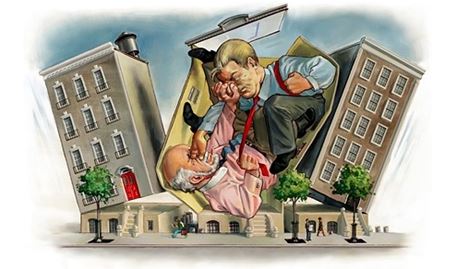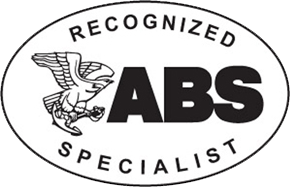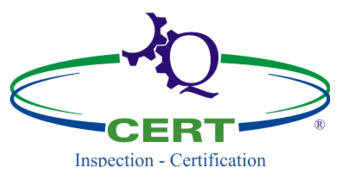
A “House Divided” and Maintenance Culture.
A House Divided against itself cannot standAbraham Lincoln, Springfield Illinois 1858
A Condition Monitoring (CM) program to be successful should be a top management decision.
The entire organization should face CM as a reliability improvement strategy and not as an extra cost. If CM’s value is not realized by everyone, it will not ‘stand’ and finally will be abandoned, no matter how efficiently it might have been applied.

The “House Divided Speech” was an address given by Abraham Lincoln (who would later become President of the United States) on June 16, 1858. By using this phrase, in our days we illustrate the fact that if members of an organization cannot agree (or fight each other), the organization will disintegrate. Similarly, a project or a strategy “cannot stand” if organization members are divided about that.
It is not uncommon to see a Technical Department complaining about lack of support from top management to invest on more sophisticated engineering technologies like Vibration analysis, IR thermography, Acoustic Emission analysis and others, claiming that management always replies that “we cannot afford the cost of Condition Monitoring” or something similar to that effect. On the contrary, common sense says that every company should support investments that produce a healthy profit. So where is the problem? Why is the “house divided”?
The failure usually lies in the limited ability of engineers to successfully propose projects and report results to management using conventional financial language. It will not shock anyone to know that engineers as a whole are not the best marketers! Maintenance offers some of the best investments possible, both in terms of cost reduction and production increases. Clearly many maintenance investments are superior to marketing or sales investments from a purely economic point of view. The main reason is that maintenance improvement funds flow directly to the bottom line. That means a cost reduction from maintenance generates much more profit than similar increases in revenue, since it delivers profit even in periods of recession, like nowadays in many sectors. However, many maintenance investments are viewed by management with suspicion.
However, many times we have seen things going wrong in a technical department. What do I mean by that? We have seen cases where CM systems are rolled out to much fanfare. The company allocates a budget on CM equipment like vibration data collectors, IR cameras, etc. A year or two later we see that CM is not regularly performed. Corrective actions are being deferred. Reports and in many cases expensive equipment are instead being shelved. Unplanned events are as high as always. Lastly, the paperwork is either incomplete or information is being faked. The worst scenario of CM failure is that management might not know that the system has actually failed. It is like having a dying patient, and the hospital going on incurring expenses for more therapeutic (expensive) treatments. What is the reason behind that? Obviously the technical department initially somehow was convinced that CM will provide the required reliability and this vision was supported by top management. However, CM fails due to some mistakes when attempting to implement successful Condition Monitoring program.
The calculation of Condition Monitoring program cost versus unplanned production downtime has already been done by many. For most machines, there is no comparison. However, this doesn’t mean that CM return on investment can easily be obtained, i.e. by the procurement of a vibration data collector, or IR camera (something that many vendors are trying to convince their customers). Also, unfairly I should say, many times the CM task is assigned to an employee with little or no training or without any type of mentoring by someone with experience. For that reason, after a short period CM equipment is shelved and the assigned employee doesn’t want to be labeled a CM specialist.
My proposal (as an engineer but also as a manager) for an organization which has the funds and willingness to apply CM for critical mechanical systems is the following, and it is based on Deming Cycle (Plan- Do- Study- Act):
Stage 1 (1-2 years) PLAN-DO
•Outsource CM services from a company you can trust and has a demonstrable experience. Request a demonstration or a sample of similar work, arrange a meeting with service provider engineers and not sales people, ask for their certifications and demonstrable experience.
•Work toward integration of CM into your organization existing maintenance strategy.
Stage 2 (6 months after starting Stage 1) CHECK-STUDY
•Use KPIs to measure the efficiency of CM over a period of at least one year.
•Work on change management and culture change of your technical department in the beginning and move on to the entire organization later.
Stage 3 (6 months after starting Stage 2) ACT-PLAN
•Communicate the results to top management of the organization.
•Plan your next step. Whether you choose to move on expansion or step back and examine what might have gone wrong.
•In case the organization chooses to move on, examine the scenarios in-house or outsourcing CM services.
•Examine the requirement for personnel training and equipment procurement.

At the end of the day, as an engineer who wants to establish a successful machinery CM program it is important for you to seek the involvement of the entire organization up to the top management in order for the program to be able to ‘stand’ and keep being funded. But involvement has to work both ways: you request funding, but also you must at the same time report results based on acceptable KPIs.






